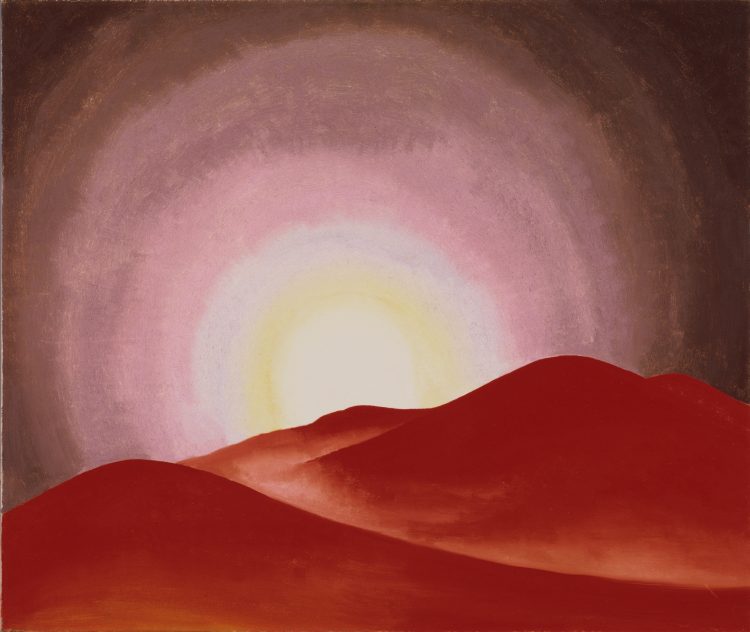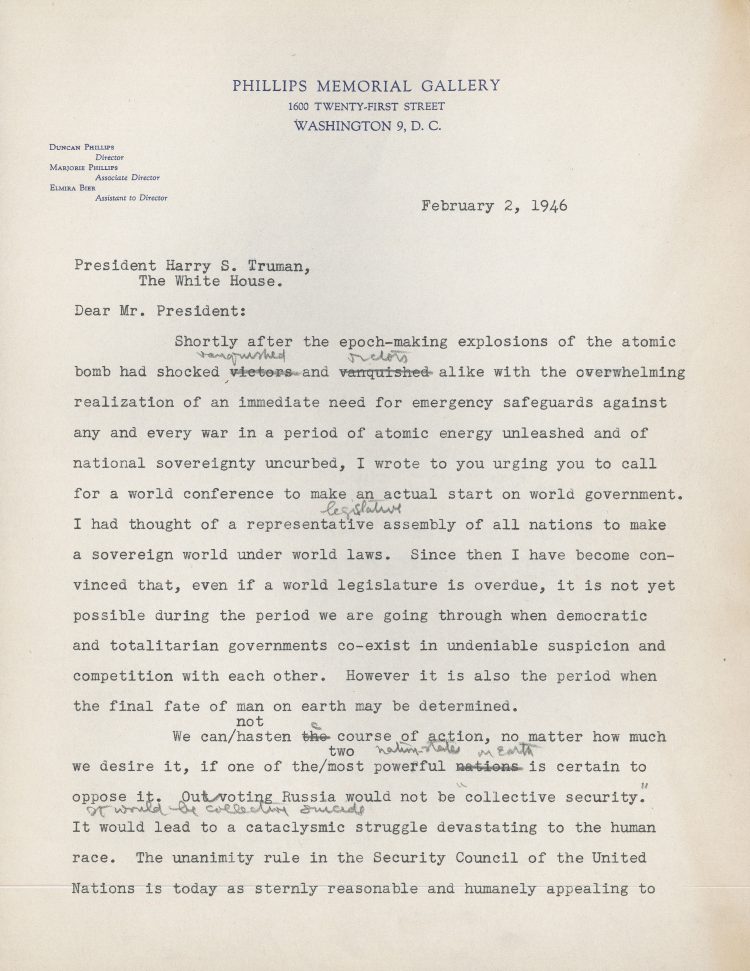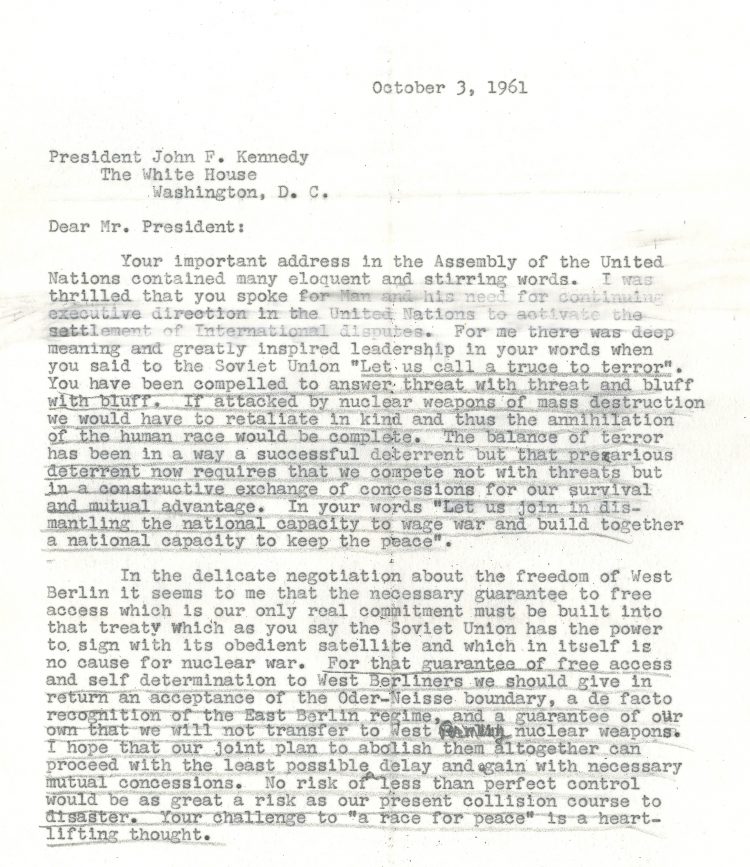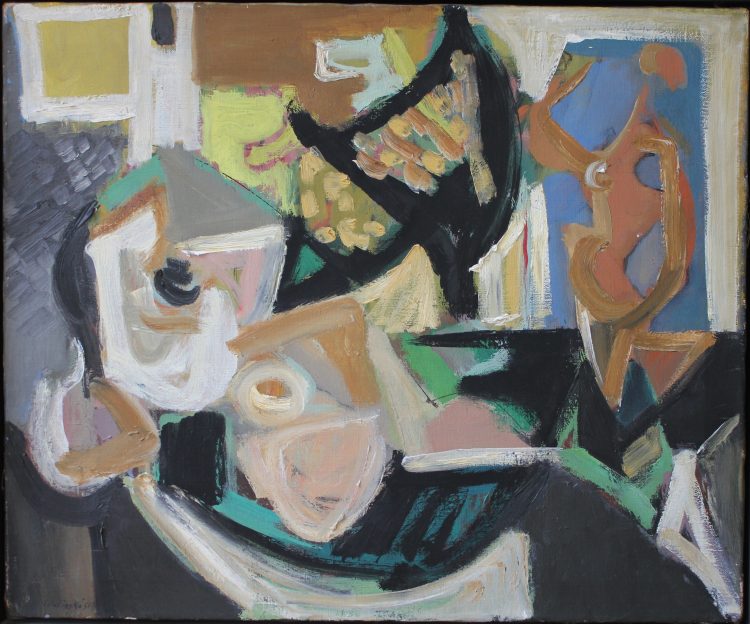The Phillips Collection engages with local voices by asking community members to write labels in response to works in the collection. Read some here on the blog and also in the galleries of Seeing Differently: The Phillips Collects for a New Century. How do these perspectives help you see differently? What would you write about these artworks?

Grandma Moses, Hoosick Falls in Winter, 1944, Oil on hardboard, 19 3/4 x 23 3/4 in., The Phillips Collection, Acquired 1949
Sleepy Town Covered in Snow
As Robert Frost said, “Whose woods are these?” As the sun is rising and brightening the winter sky, we begin to see the town of Hoosick Falls. When we look, what do we see? Do we see a sleepy American town peacefully waking up to snow? As we stand on top of the mountain looking down at the town, we see multi-colored houses surrounding a winding river. We see church steeples and a railroad stop. Is this the last stop? Who is getting on? What has arrived? Are we taken back to a simpler time? There are no streetlights or cars. Can we finally conclude, “Whose woods are these?”
—Stephanie Romano, Graduate Student, University of Maryland, Education and Curriculum Instruction

Gifford Beal, Waterfall, Haiti, 1954, Oil and egg tempera on canvas, 36 x 36 in., The Phillips Collection, Acquired 1955
It looks like someone found their oasis. When I look at this painting, I get an overwhelming sense of relief that someone is finally showing the beautiful side of countries usually associated with poverty. Growing up in the US, all I would see about Africa, where my family had come from, were commercials of people starving, not to mention the textbooks about African slavery and poverty making you believe that’s the only side of the large continent. When I went to West Africa, specifically Gambia, for the first time I got to see the truth—it was beautiful. This piece triggered the emotion I felt when I got to experience the sun setting on the ocean from Africa’s coast for the first time in my life.
What do you see?
—Abdul Sallah, Sophomore, University of Maryland, Studio Art Major

Georgia O’Keeffe, Red Hills, Lake George, 1927, Oil on canvas, 27 in x 32 in., The Phillips Collection, Acquired 1945
Looking at this painting makes me feel like I am being transported into a surreal dream. It feels like you can step directly into it and soak up the sun’s abundant energy. A subtle glow creates a winding pathway through the rolling hills, leading you on an unknown journey. It feels like you can get lost along the way, not knowing where the turns lead or what lies ahead. You know you should not stare directly into the sun, but you are drawn to do so anyway. The sun illuminates the sky with its multiple halos radiating all around, sending signals out into the universe. It pulls you toward its center with an inescapable force. This painting depicts a natural everyday occurrence, but it feels so otherworldly. It shows nature’s beauty and how every sunrise and sunset are uniquely extraordinary.
—MacKenzie Airey, Sophomore, University of Maryland, Studio Art Major







